Meet the team
Oliver Stark, Director, CEO (MSc. Human and Biological Robotics 2018)
Yann Glauser, Director, CTO (University of Southampton MSc. Propulsion and Engine Systems 2015)
Get in touch
Our project
Evo Robotics are making lifelike robot arms and hands that can perform tasks that have previously challenged robotic solutions. Our robots learn to carry out tasks by mimicking real-life demonstrations and through the application of deep learning techniques. Initially our robots will perform simple manipulation tasks, such as moving inventory in e-commerce warehouses but, as their dexterity improves, we are planning for our robots to undertake assembly tasks.
The foundations for Evo Robotics started when CEO Oliver was completing his Masters in Human and Biological Robotics in the department of Bioengineering, and was working with Prof. Dario Farina on “neuroprosthetics” for his thesis. Neuroprosthetics are robotic prostheses controlled via the patient’s nervous system either by reading brain waves, or electrical signals in muscles. Oliver applied new deep learning approaches to improve the prediction of hand motion from EMG, alongside mechanical improvements to create one of the world’s most anthropomorphic robot hands. These have been built entirely at the Imperial College Advanced Hackspace.
Oliver’s original plan was to form a start-up based on his thesis. The project was accepted onto the Entrepreneur First’s LD12 programme, which takes individual, aspiring entrepreneurs and produces teams ready to raise VC money at multi-million pound valuations. It was on the programme that Oliver met Yann and they discovered their shared motivation to restore functionality to upper-limb amputees through robotics. Together we attempted to commercialise Oliver’s work on prosthetics but we realised that, despite the high demand for upper-limb prosthetics, the market was too small to justify VC investment. This was compounded by steep barriers to entry into the medical domain.
We decided to pivot the technology to autonomous robotics which has much higher demand, particularly in logtistics. Evo Robotics are now building robots that can successfully grasp and manipulate almost any object by pairing the bio-inspired arms with deep reinforcement learning.
Support from Hackspace and the wider Imperial community
The staff at Hackspace have been incredibly supportive and helpful in the development of Evo Robotics and are always on hand to help debug equipment and bridge any gaps in our knowledge. There are resident experts on almost everything whether that be electronics, synthetic biology, or manufacturing processes. This “know-how” expertise is one of the most valuable assets at Hackspace.
Our primary use of the Hackspace has been for rapid prototyping with 3D printing, which seems to be one of the more common uses of the Hackspace. We’ve primarily been using the MarkForged Mark Two and Onyx One, which are much higher quality 3D printers that allow us to produce high resolution, functional parts. The Mark Two also allows us to inlay carbon fibre, which means we can produce both a “looks-like” and “functions-like” part, without needing to CNC it from aluminium. We’ve also used the Piranah laser cutter extensively for cutting silicone, Kevlar, and acrylic parts for when we want something cheap and strong. Alongside these we’ve had access to other random hand tools and electronics equipment necessary to building hardware.
We’ve made some great friends with Hackspace regulars and there is a lot of encouragement amongst the community there. We often help each other out by sharing domain expertise, and even more practically by starting a 3D print for others when they aren’t there.
If we had to use three words to describe Hackspace they would be dream, desire and build.
(At Hackspace) there are resident experts on almost everything whether that be electronics, synthetic biology, or manufacturing processes. This “know-how” expertise is one of the most valuable assets at Hackspace.
Our successes and learning
It was fantastic to be featured on the Imperial News website and when we obtained commercial traction with several famous companies, including one that was FTSE-100 listed, it was a great boost for the company. Acceptance onto the Entrepreneur First accelerator programme was also a massive step for the project when it was still in its infancy and, although we didn’t get funding, it gave us the space to realise how best to develop our business.
Some of the setbacks have been difficult, such as not receiving funding from Entrepreneur First and the Royal Academy of Engineering, but the application process has allowed us to learn more about what we want to do. It’s also challenging because the nature of our product and the involvement of machine learning means the mechanical design requires many iterations to reach a point at which it can be easily controlled. However, again this has been part of the learning process.
Advice to aspiring makers, hackers and entrepreneurs
To makers, hackers and inventors, we would say that the primary obstacle to making something, is you. Before coming to the Hackspace, I’d never built anything and it always seemed too far to go but, the moment I arrived, I wished I had come sooner. Just get out of your comfort zone and at least have an induction. Once you see how easy it is to build things, you’ll be addicted.
To entrepreneurs, I would say that the Hackspace offers a serious competitive advantage if you’re making hardware. It’s probably the best place to build hardware, short of living in Shenzhen.
Before coming to the Hackspace, I’d never built anything and it always seemed too far to go but, the moment I arrived, I wished I had come sooner. Just get out of your comfort zone and at least have an induction. Once you see how easy it is to build things, you’ll be addicted.
Future plans
We are seeking investment, and we have applied for funding through several channels, and we think we will have a good chance of being successful. Currently investment is our biggest barrier to growth and we are looking to make more contacts with businesses who are interested in this technology.
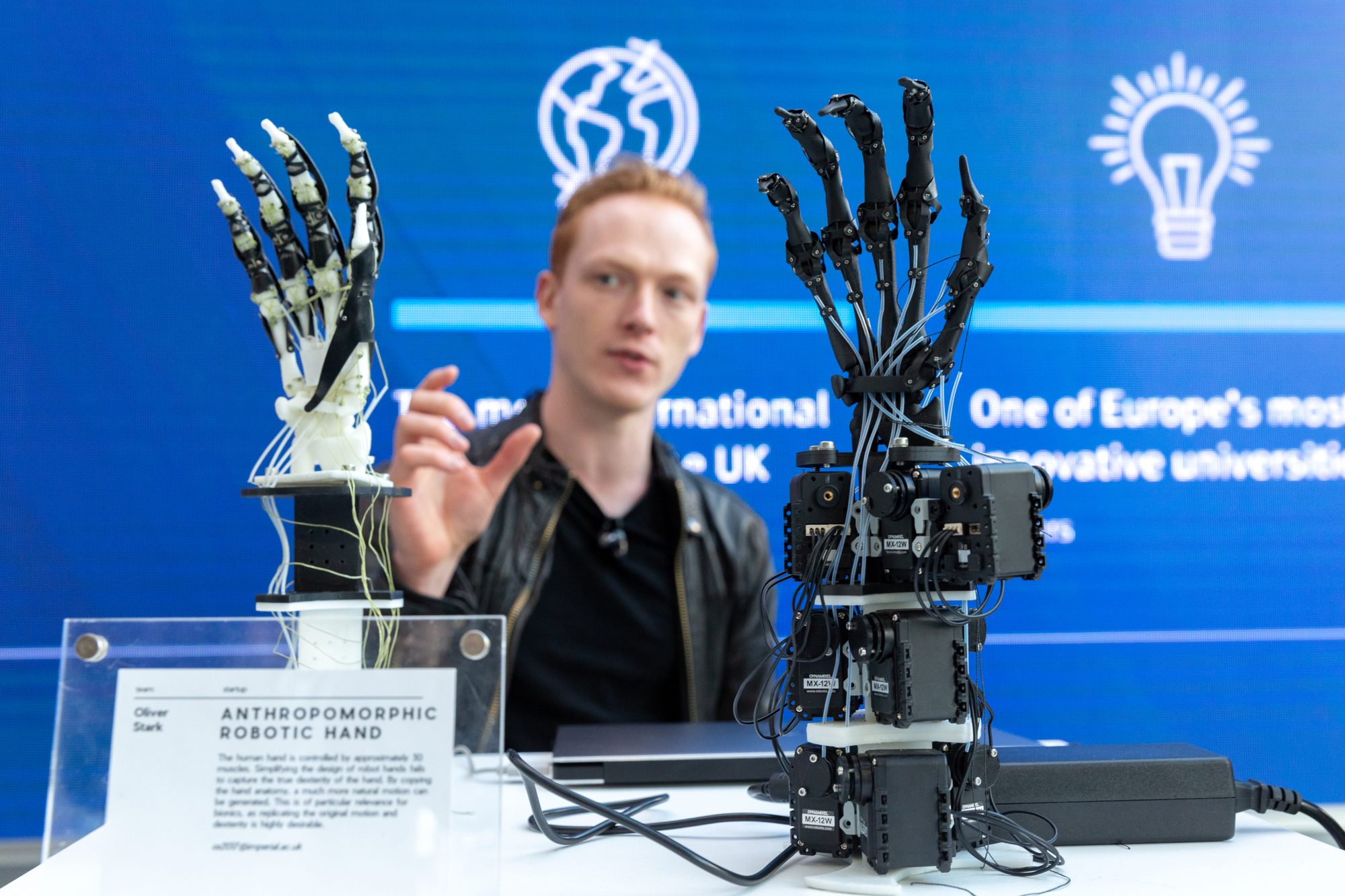
More from Hackspace
Discover what’s going on at the Hackspace.
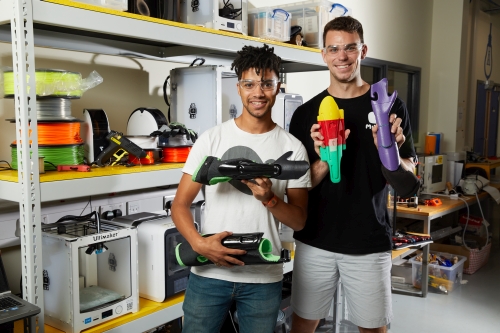
Read our success stories
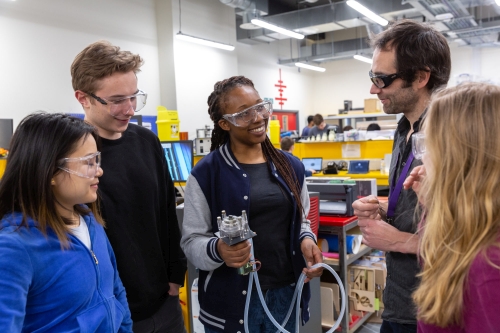
Work with us
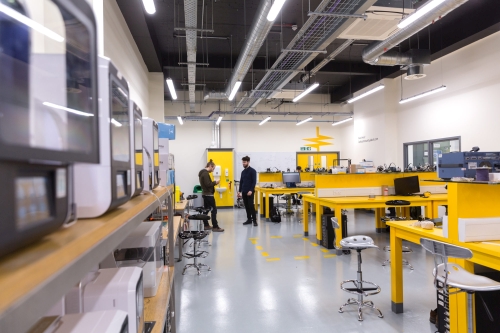
Our facilities
News
Catch up on the latest goings-on at Hackspace.
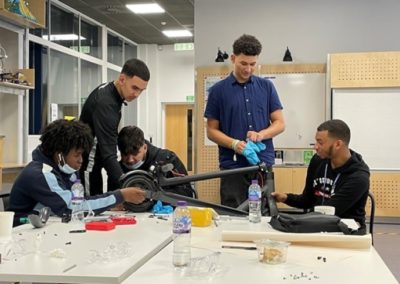
Imperial engineers work with local youth club to design and build e-scooters
Imperial has been working with North Paddington Youth Club to build electric scooters alongside the College's engineers.
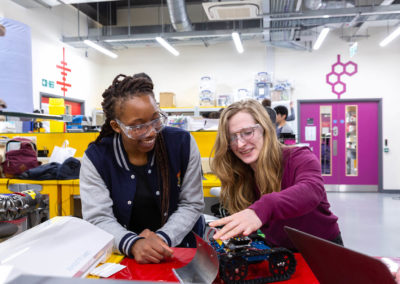
When Science and Art collide: White City Sculpture Challenge
The 2022 Sculpture Challenge will provide students the opportunity to collaborate and bring their vision to reality, resulting in the winning sculpture having a permanent presence at the White City Campus.
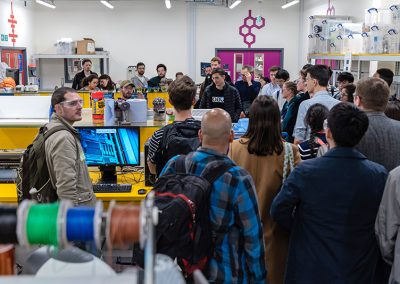
Hackstarter programme launches to support Imperial’s student makers and creators
Imperial College Advanced Hackspace launches Hackstarter to provide £500 prototype development grants.
© Copyright Advanced Hackspace | Powered by Imperial College London | Privacy Policy I Accessibility Statement | Website by Herd
